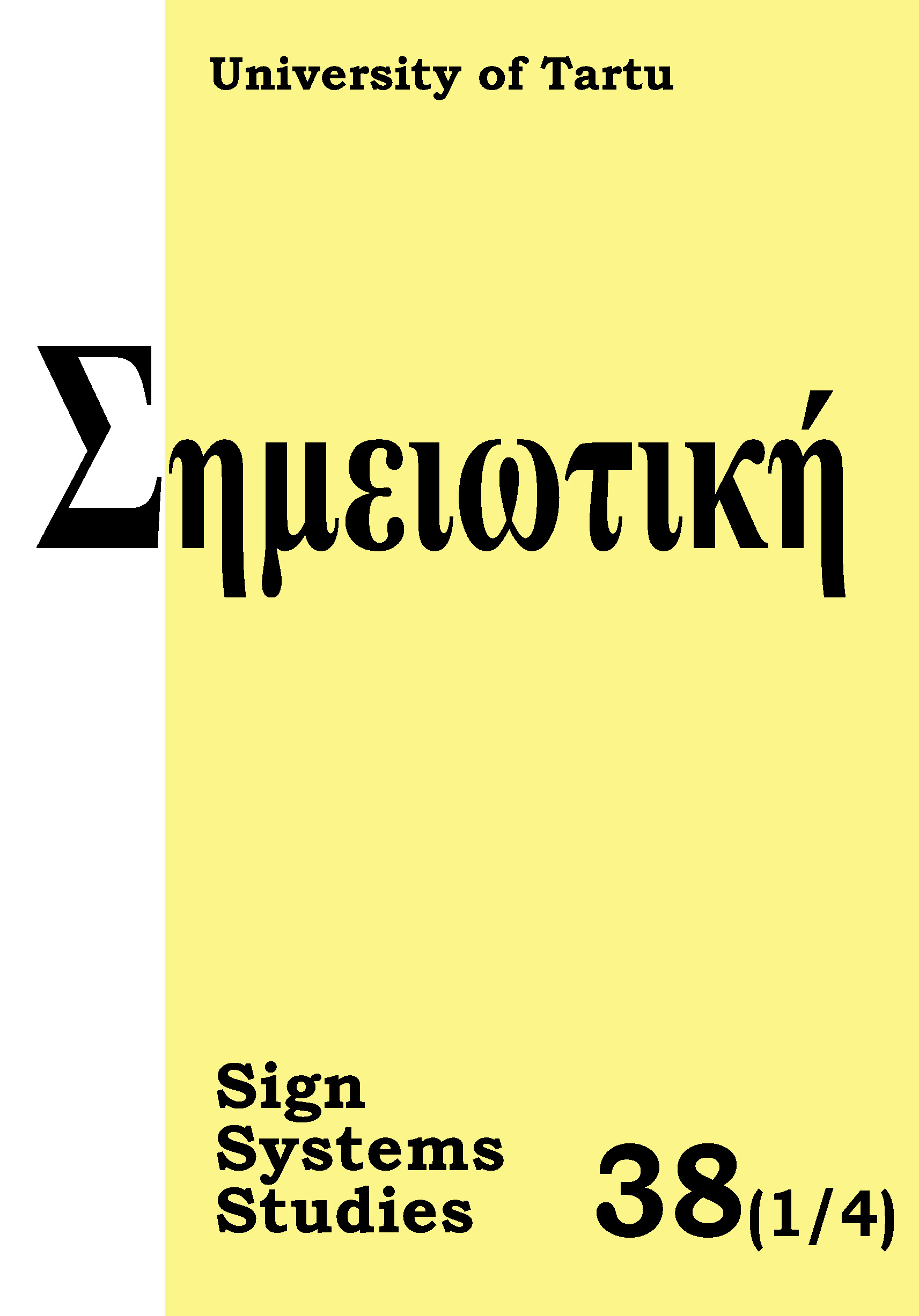Semiotics of mimesis and communicative relationship among texts: Ekphrasis and replication between Hesiod and Homer
DOI:
https://doi.org/10.12697/SSS.2010.38.1-4.07Abstract
The Shield of Heracles by Hesiod and Homer’s Iliad, XVIII show how mimesis should be considered: it is a process that should be seen different according to the levels that it refers to. There is one object constructed by a craftsman (first level of representation), after that a poet may write about this object and its construction (second level of representation). Then yet another poet could write, on the model of the previous text, his poem with his personal idea. Explaining first, the meaning of representation, arts and mimesis in Plato (Ion, Phaedrus, Cratylus, Sophist, Laws, Republic-Book X) and in Aristotle (Poetics, Nichomachean Ethics), I would like to explain how mimesis was considered according to the terms of form and representation. After that I would carry out a textual analysis of The Shield of Heracles and Iliad, to demonstrate that even if Hesiod’s text is quite similar to Homer’s, the context, the meaning, the background of the authors and the narrative structures are different. The different levels of pertinence and the different points of view demonstrate that mimesis is not a process that produces hierarchy in retrospect, but it is something heading to the direction of what “it is not created yet”.Downloads
Download data is not yet available.
Downloads
Published
2010-12-01
How to Cite
Ghione, P. (2010). Semiotics of mimesis and communicative relationship among texts: Ekphrasis and replication between Hesiod and Homer. Sign Systems Studies, 38(1/4), 186–209. https://doi.org/10.12697/SSS.2010.38.1-4.07
Issue
Section
Articles


